
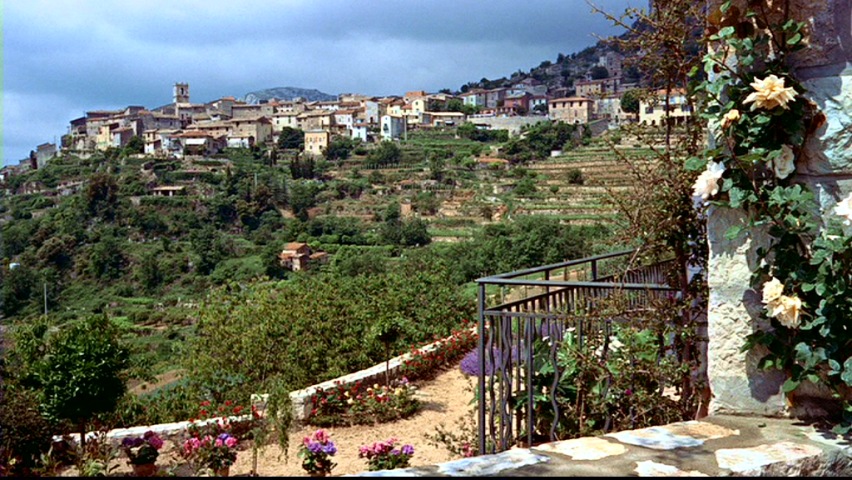
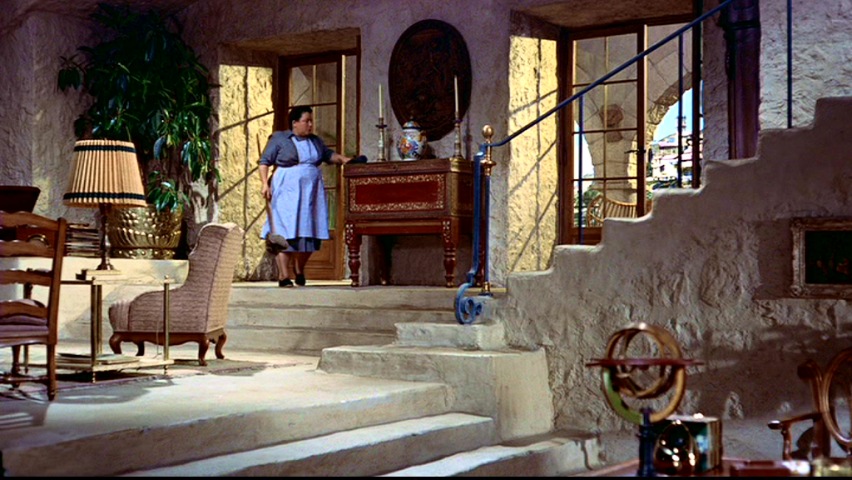

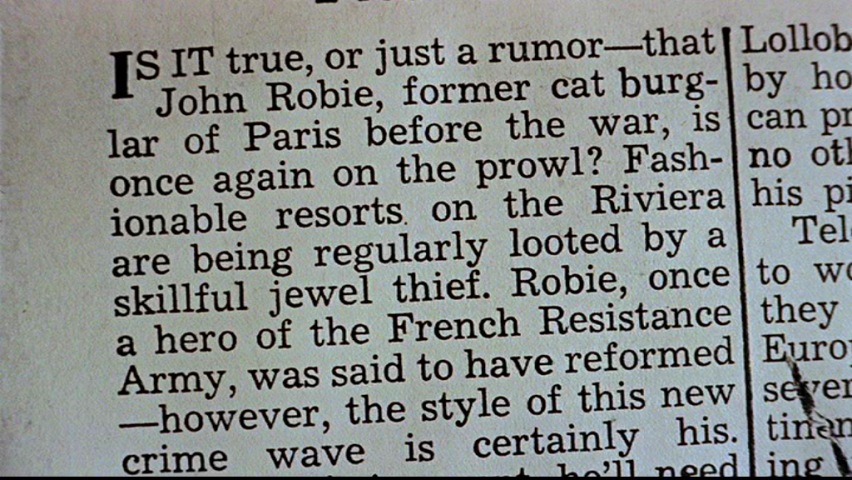
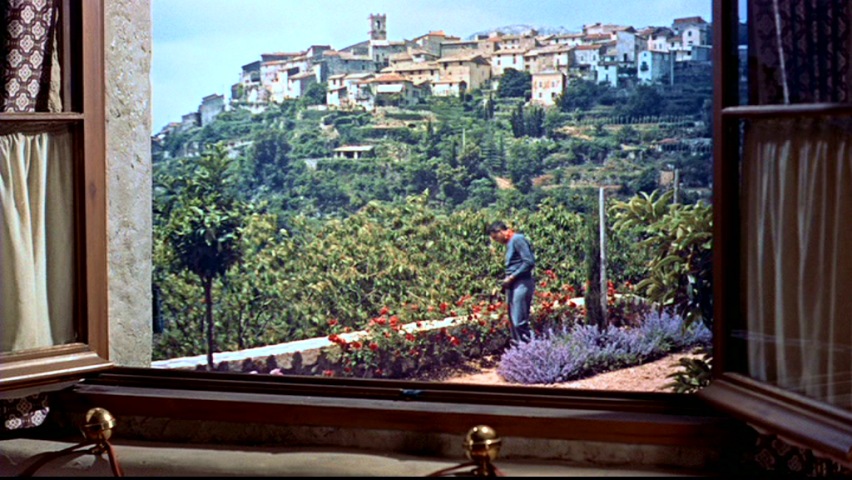


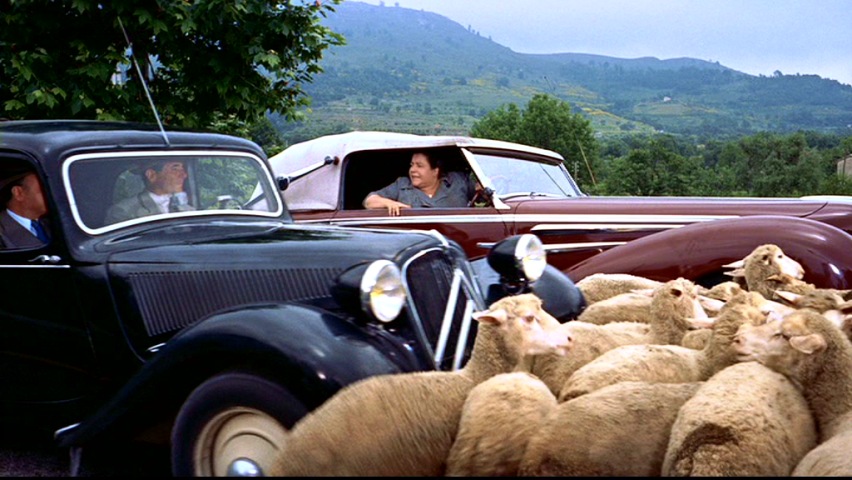
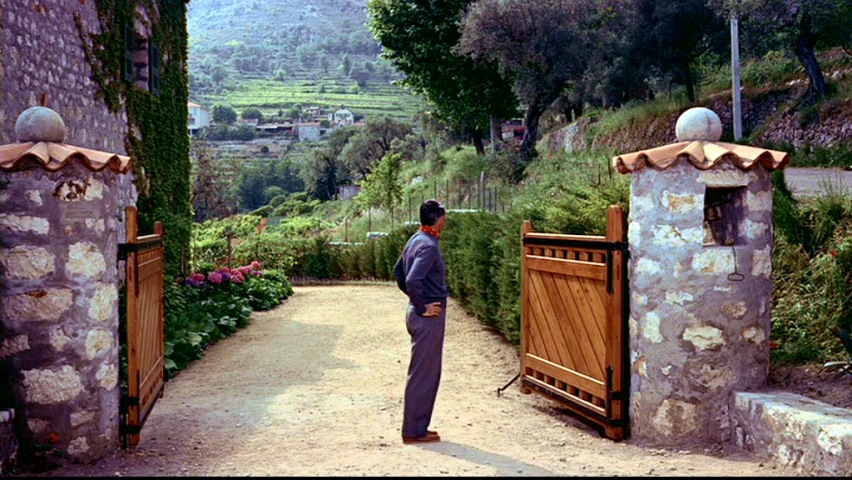

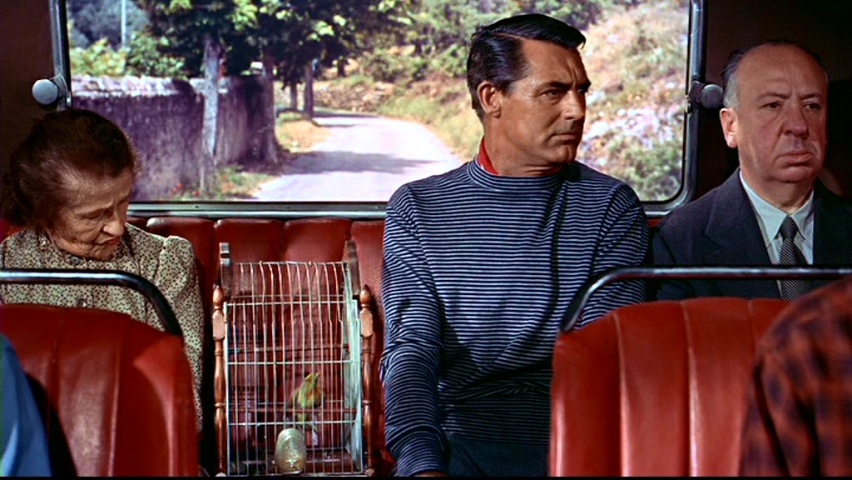

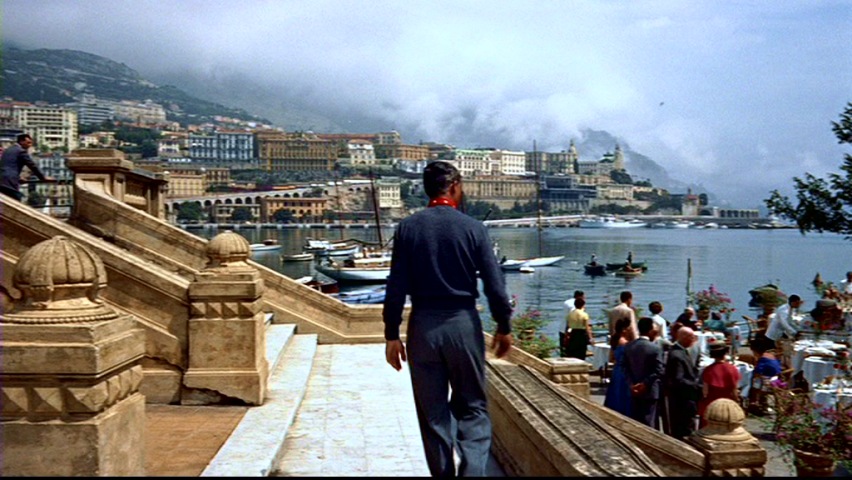
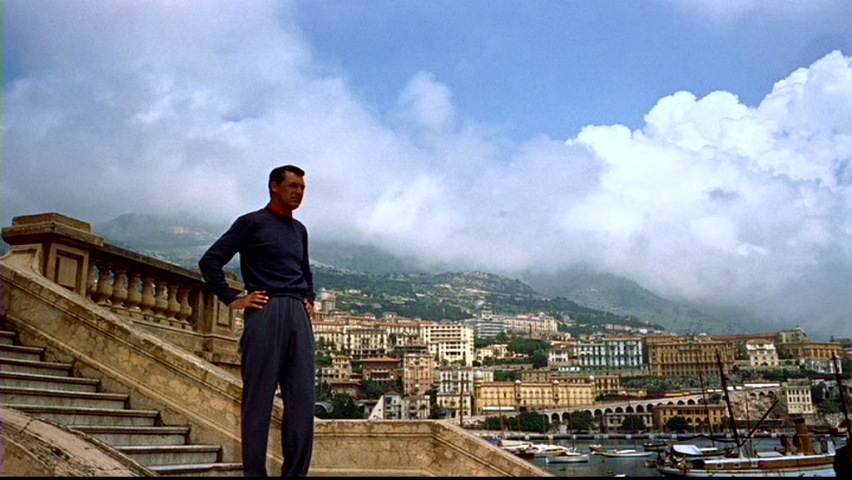



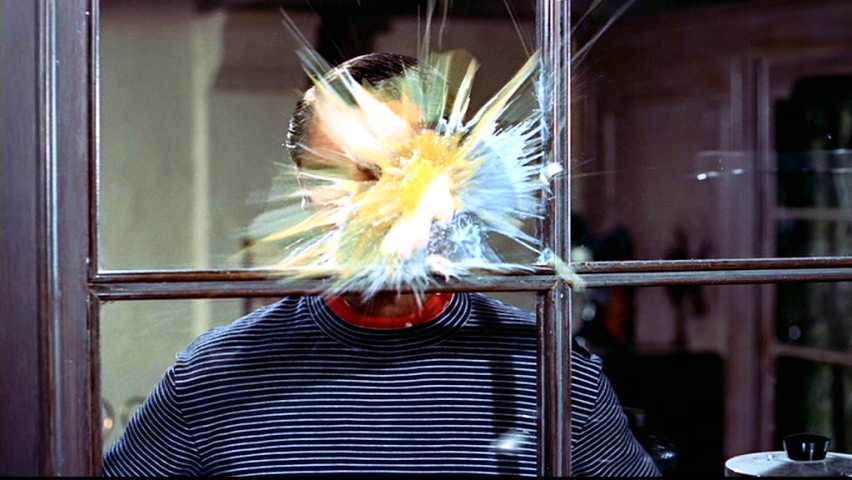
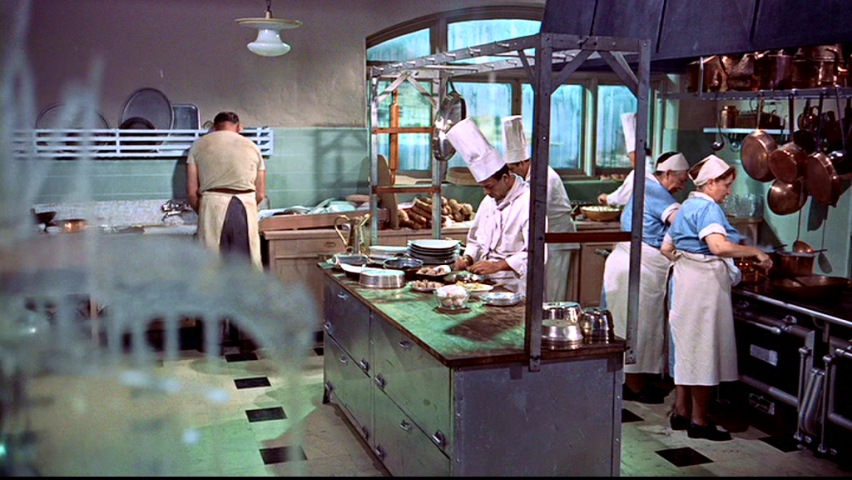
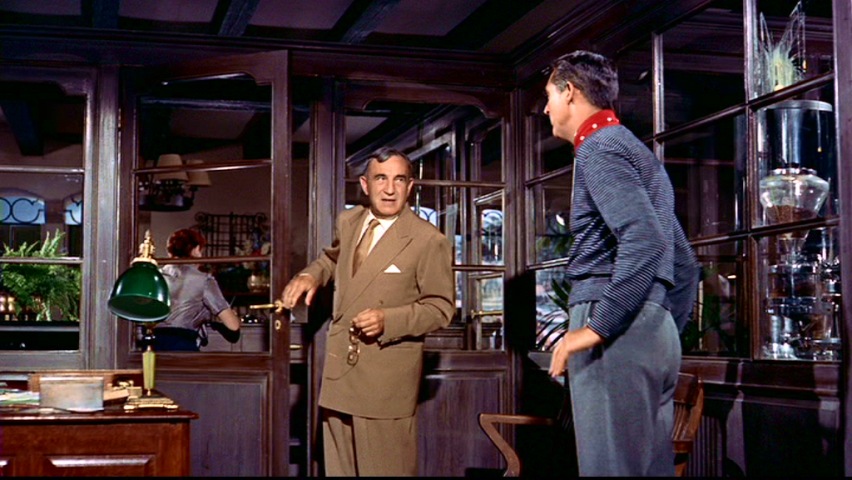

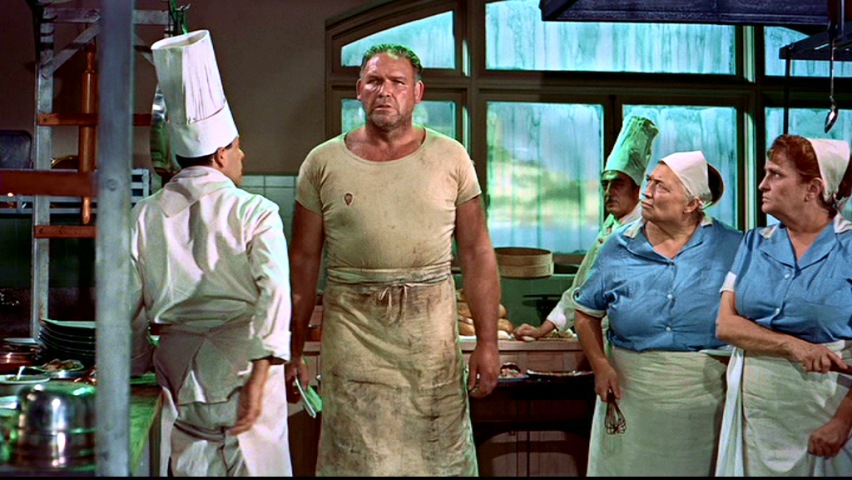





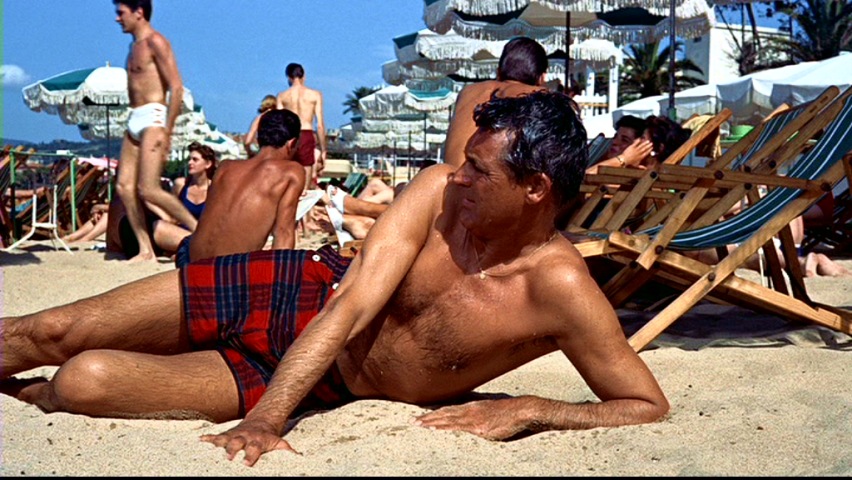

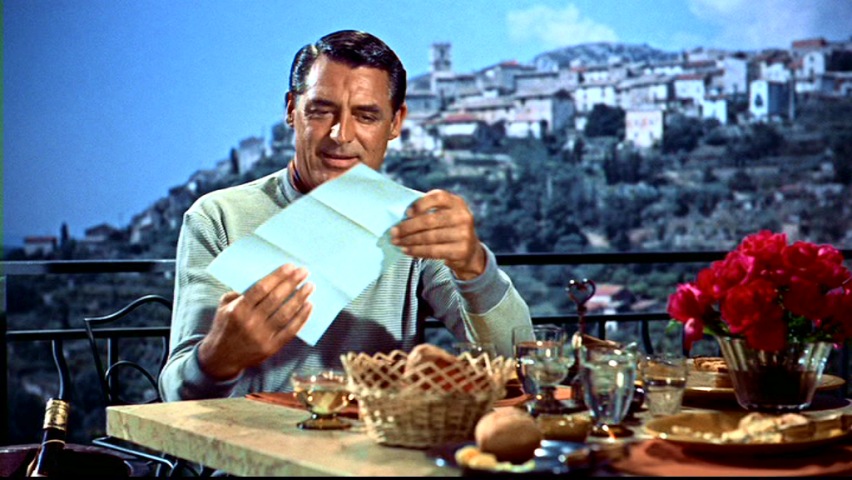


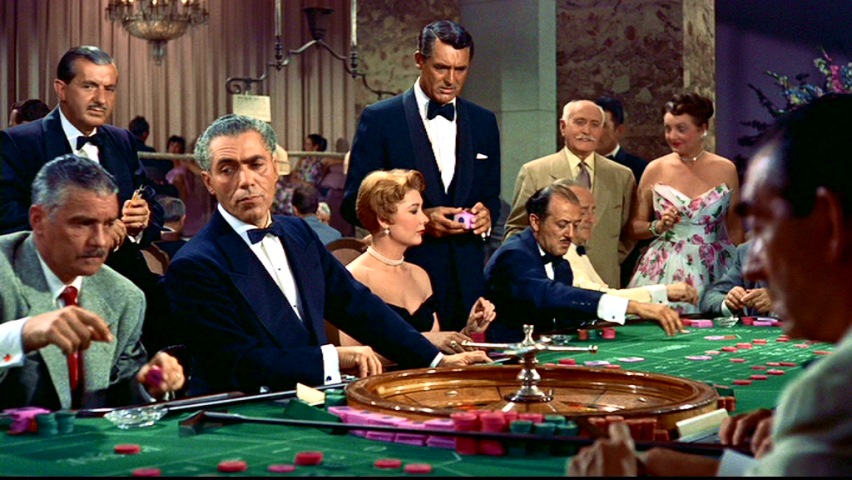
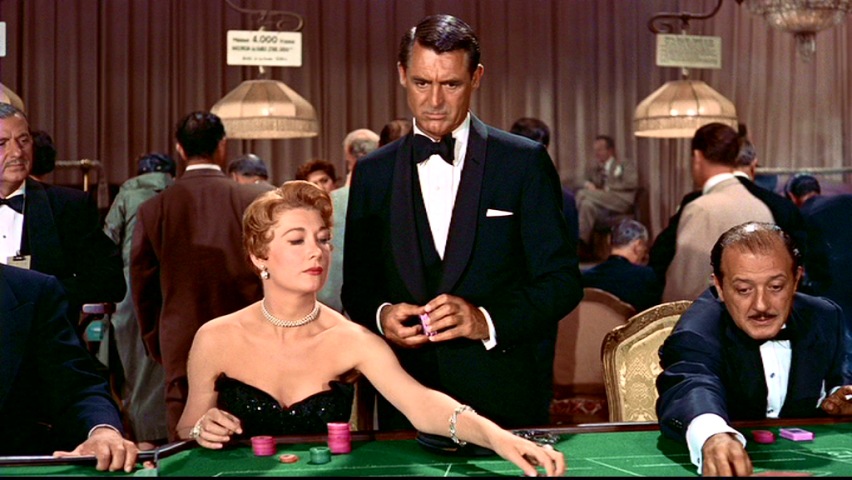
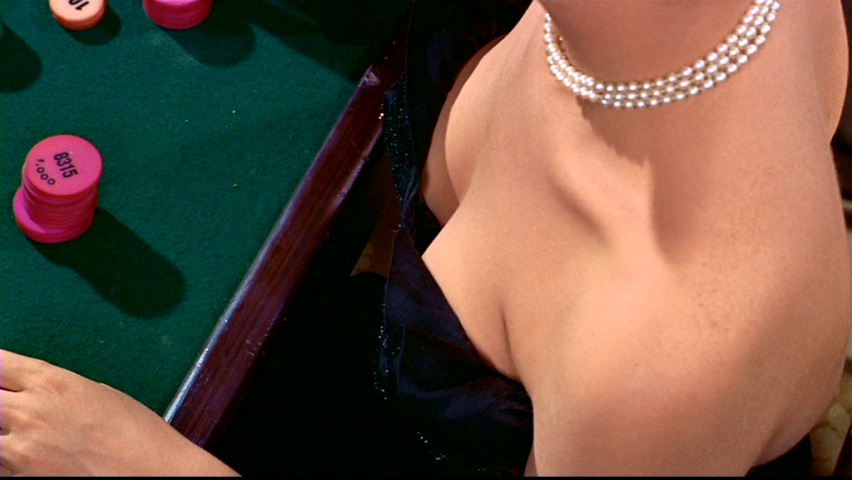


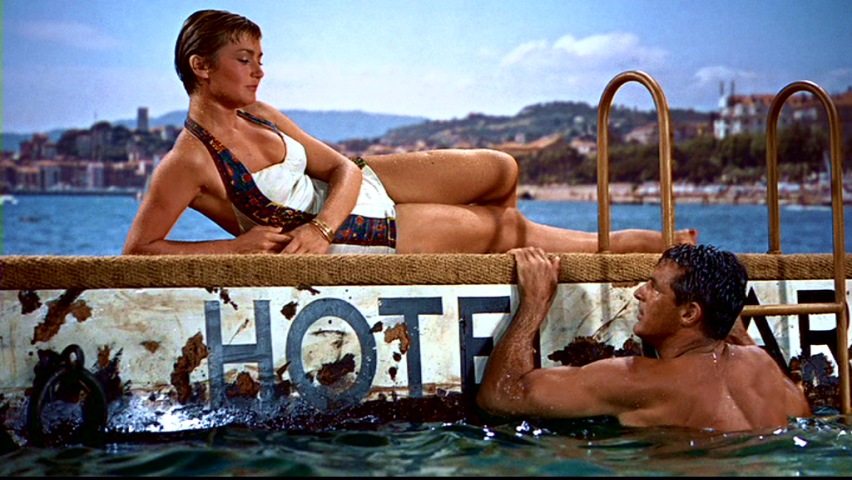


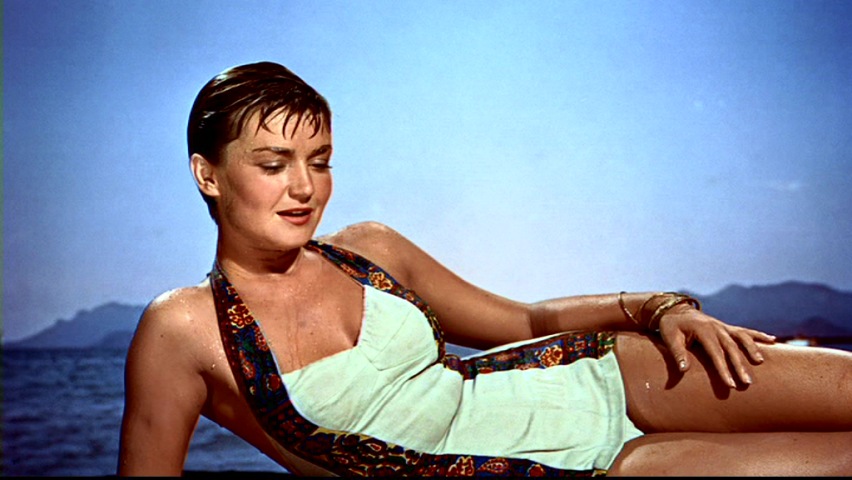

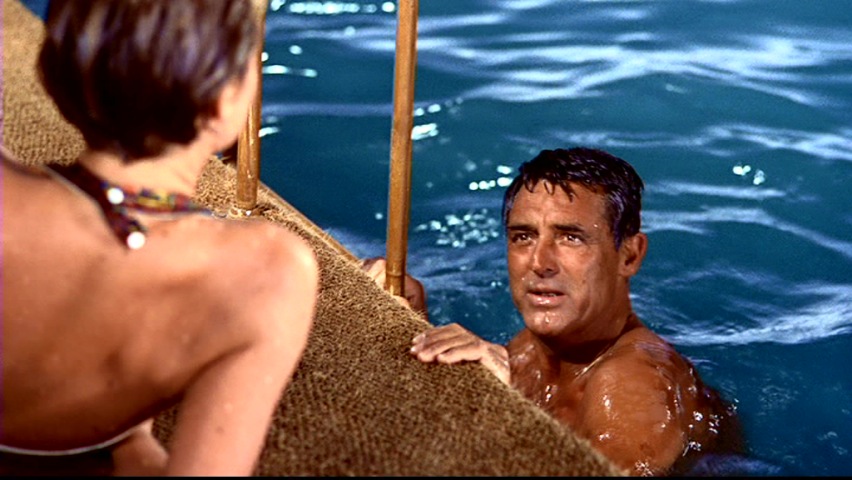
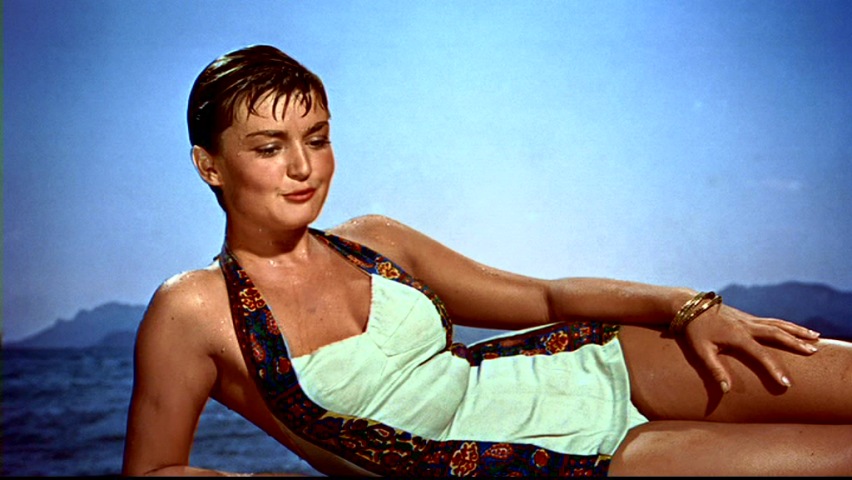
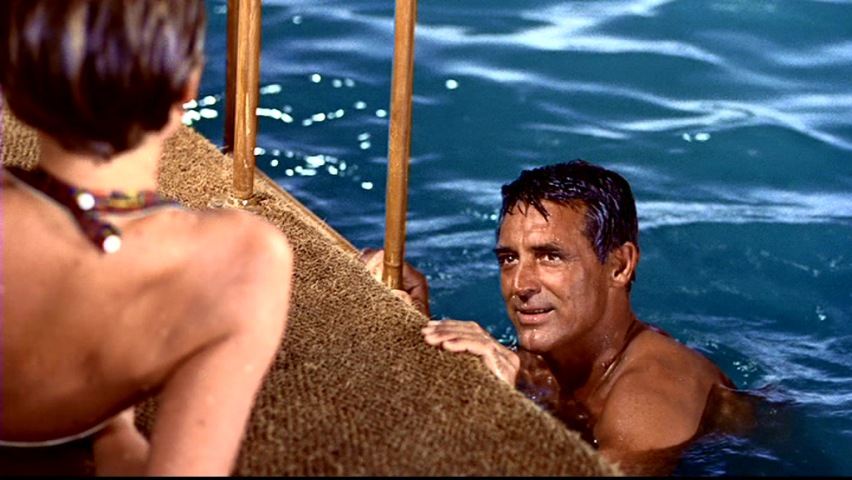


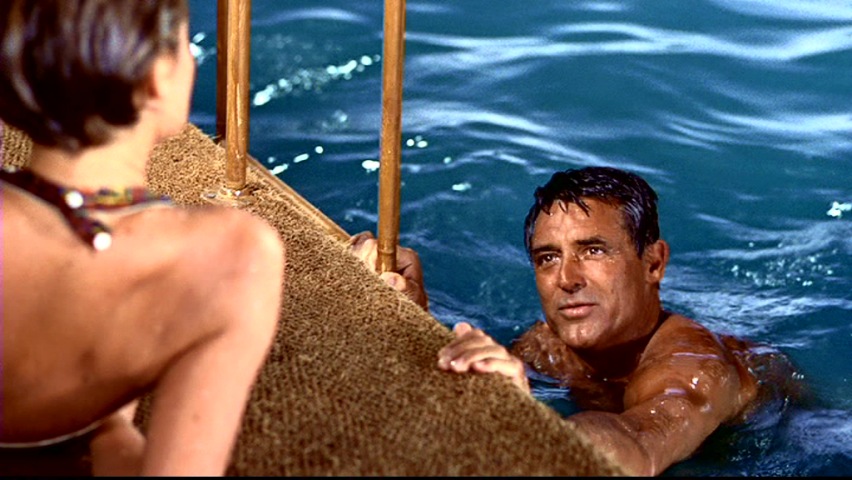
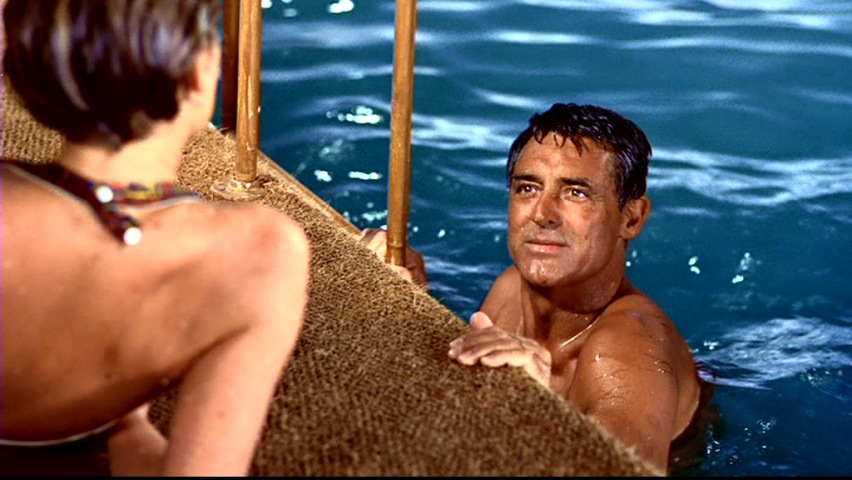
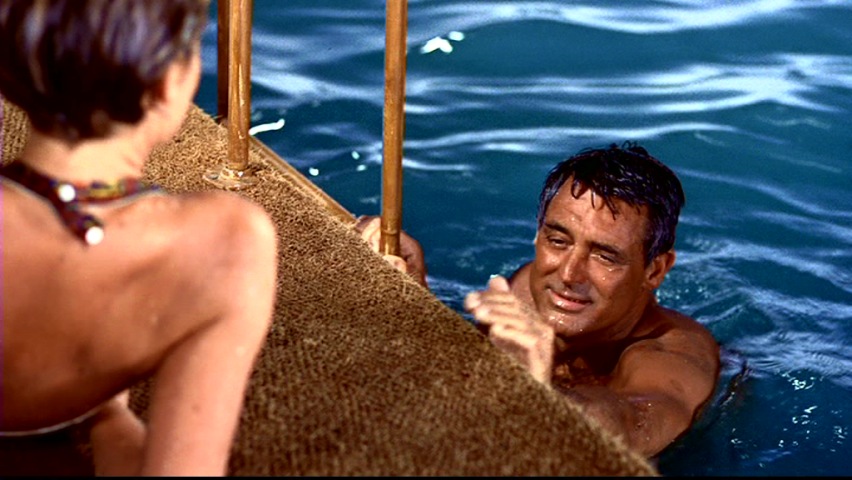
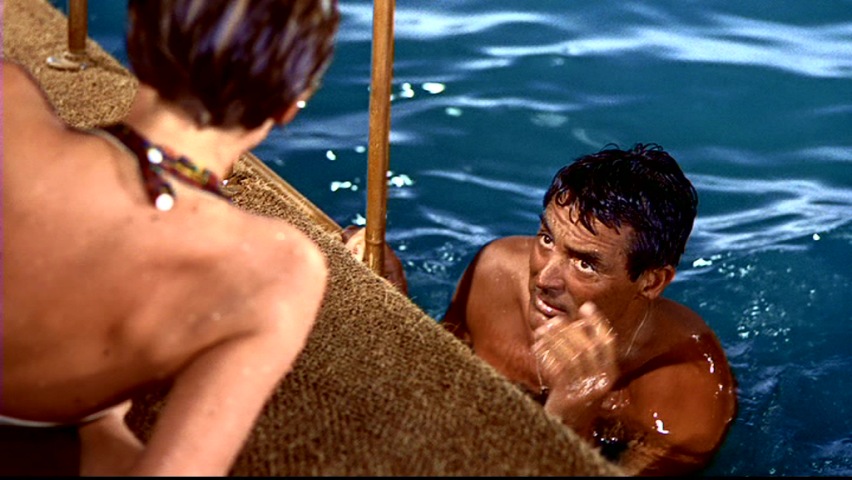
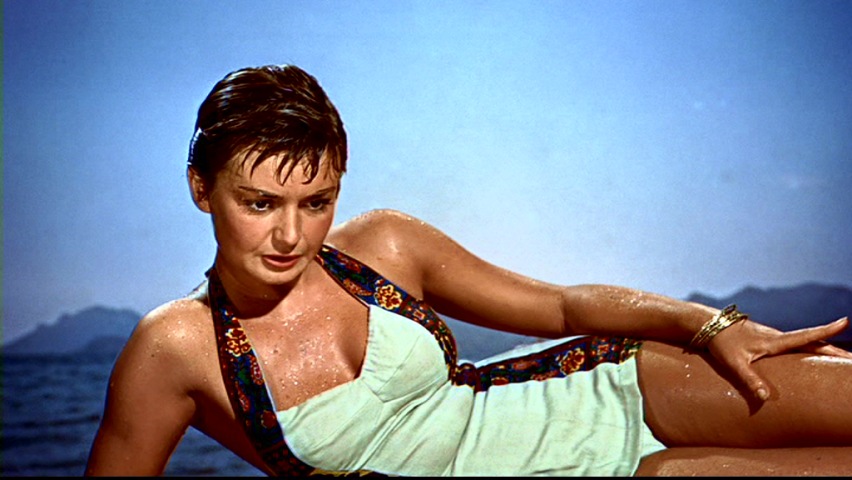


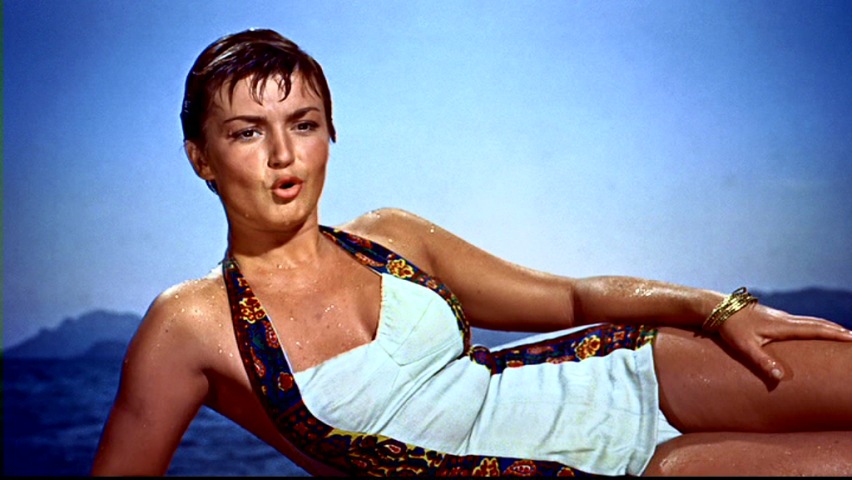
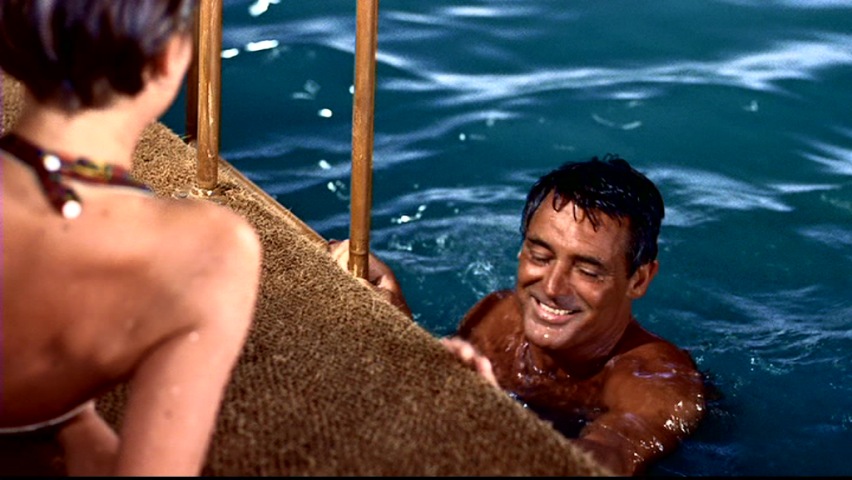
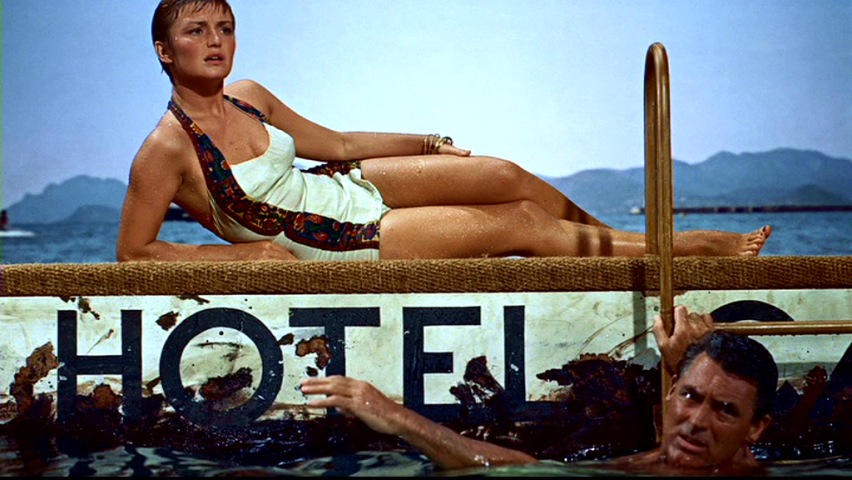


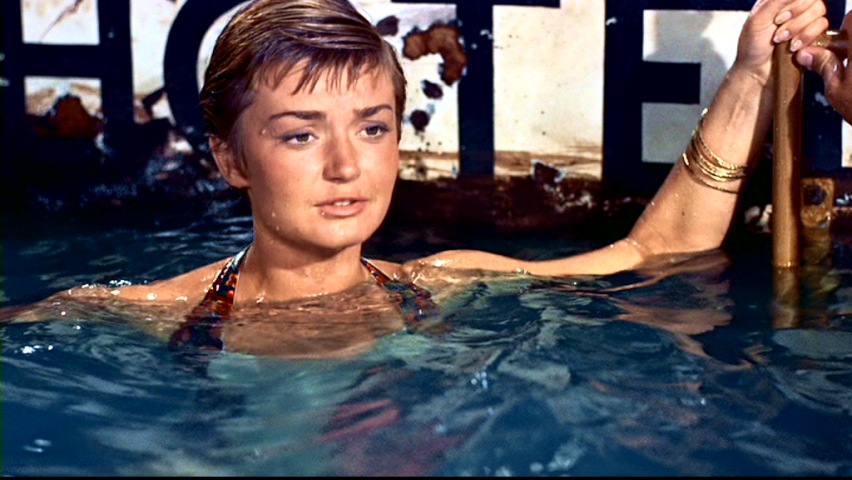
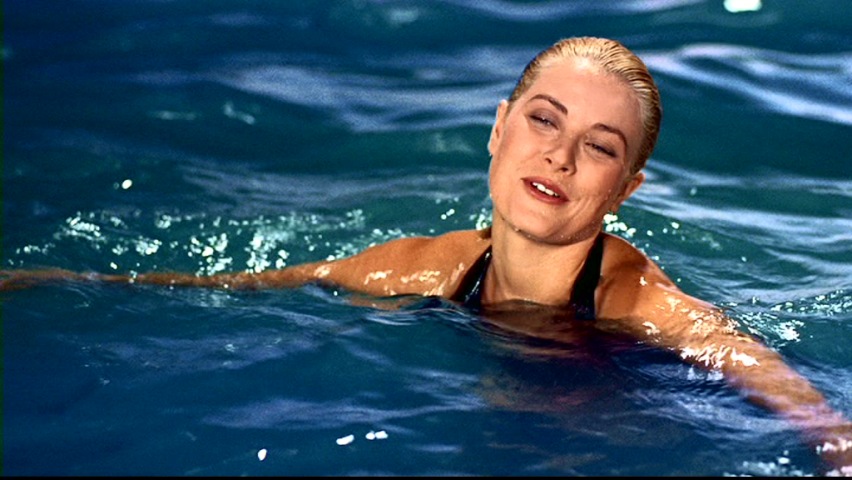



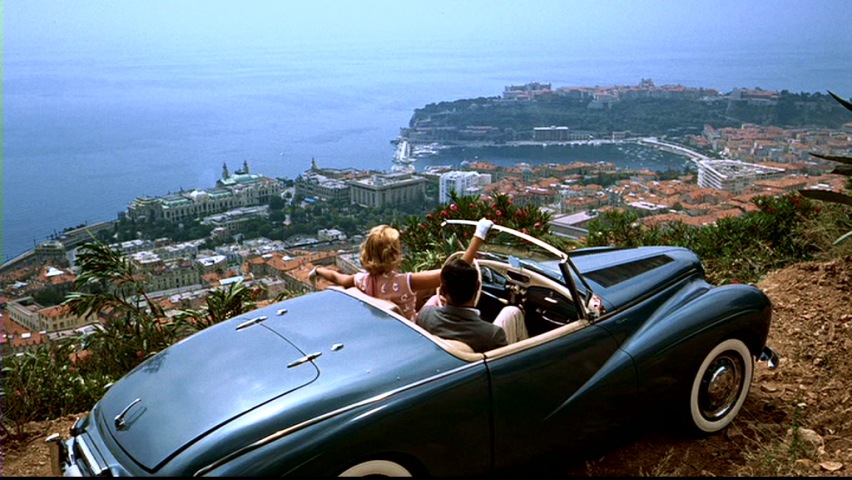
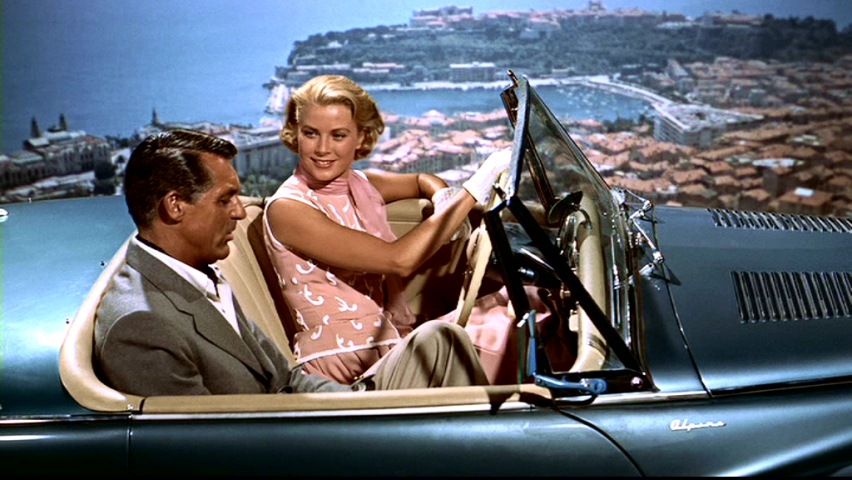

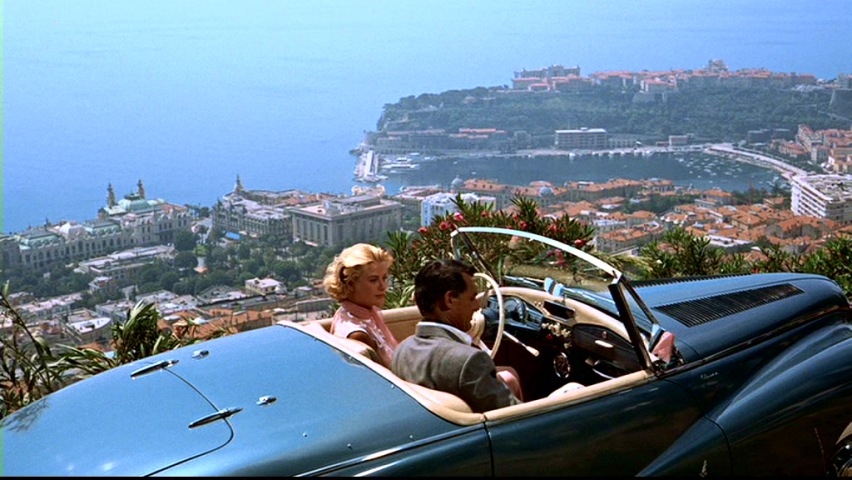
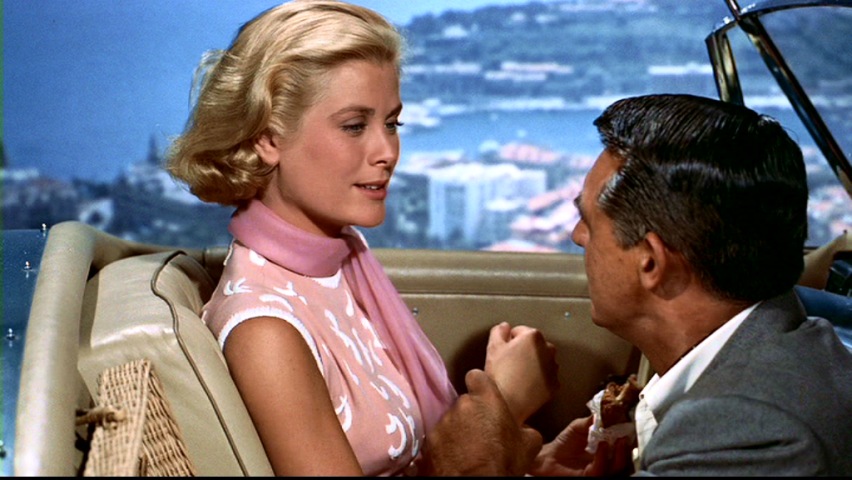

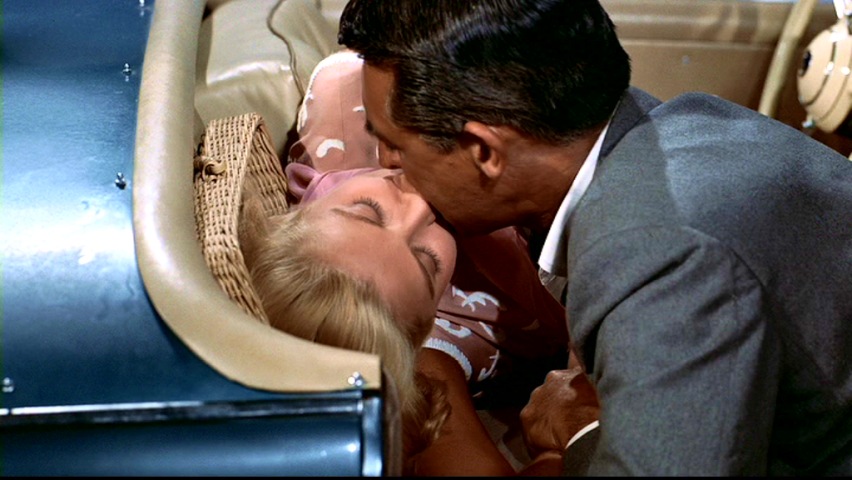

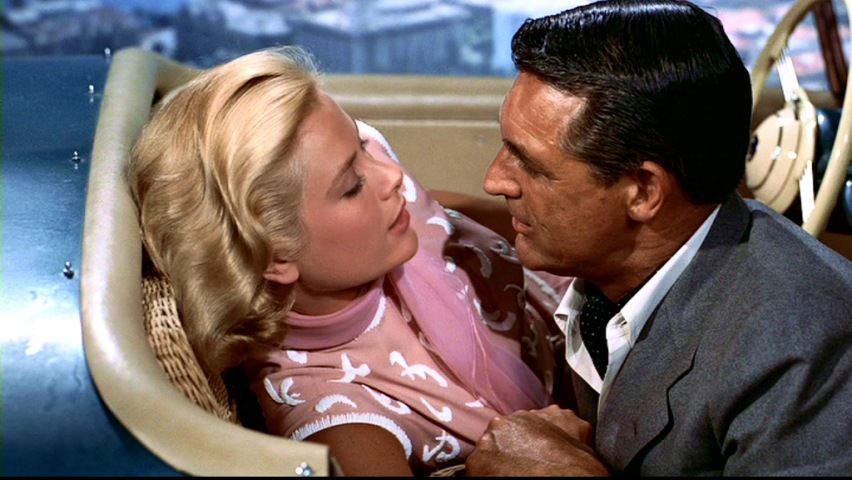
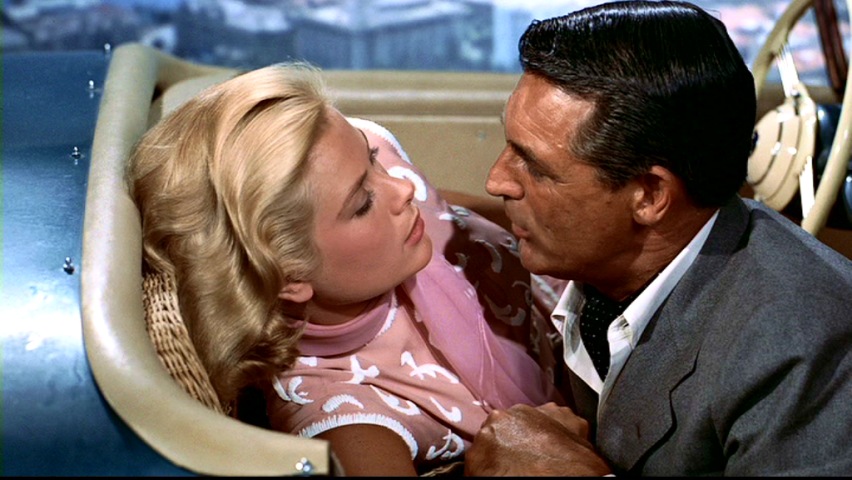
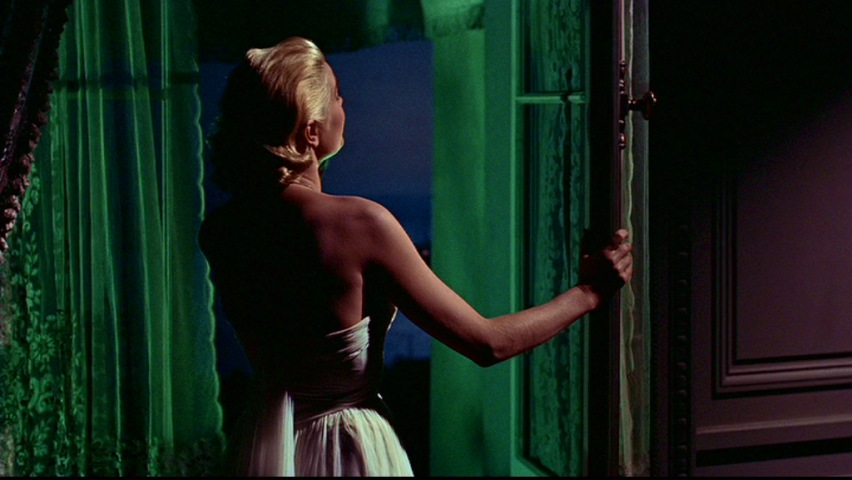
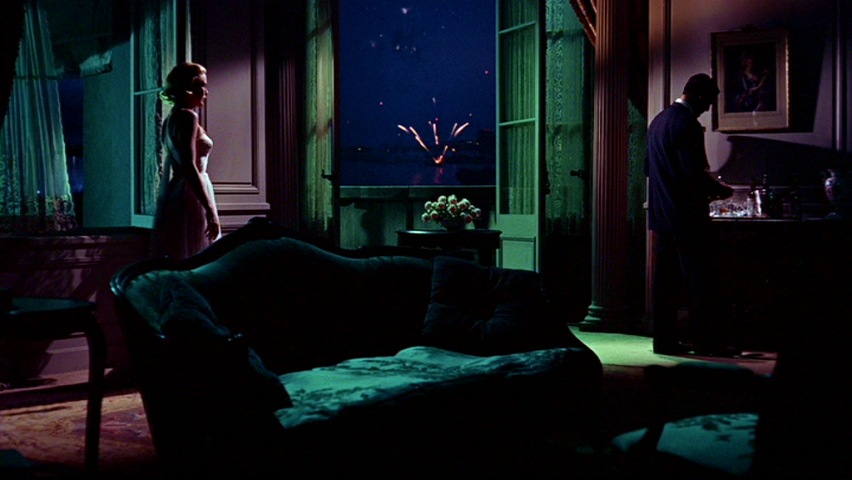
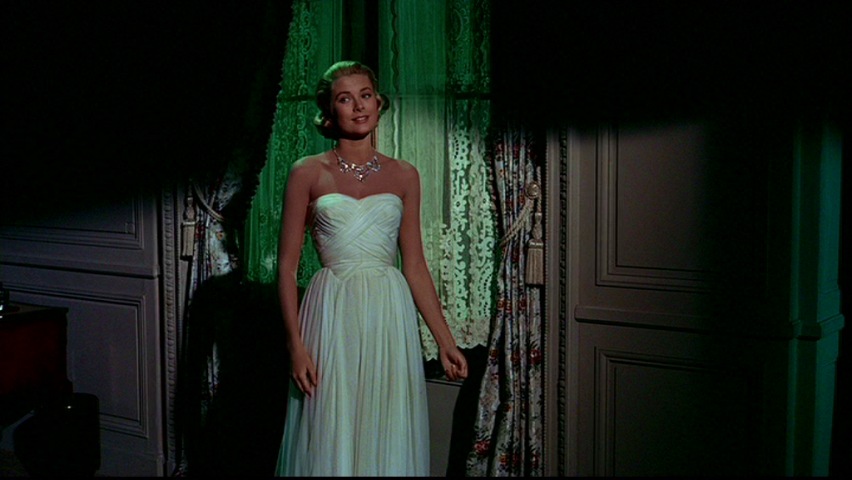
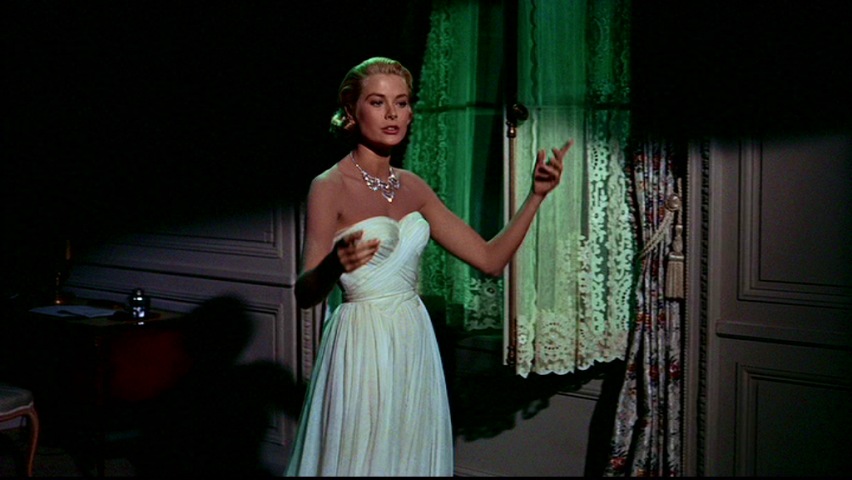
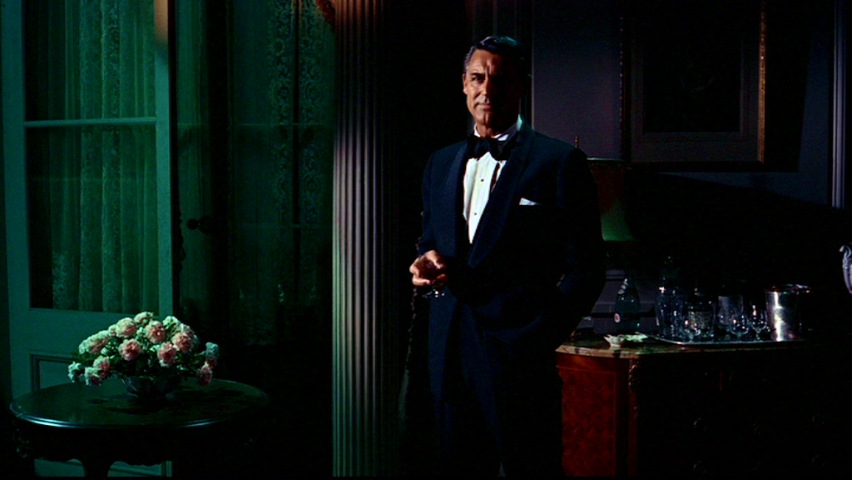


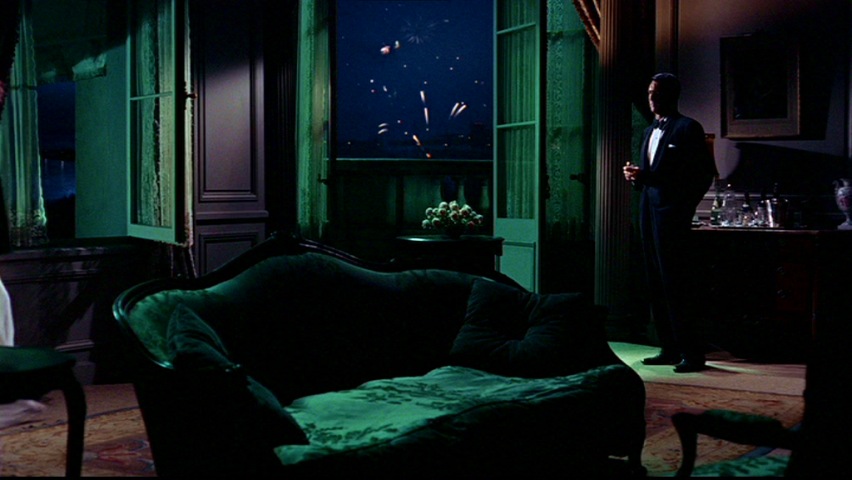

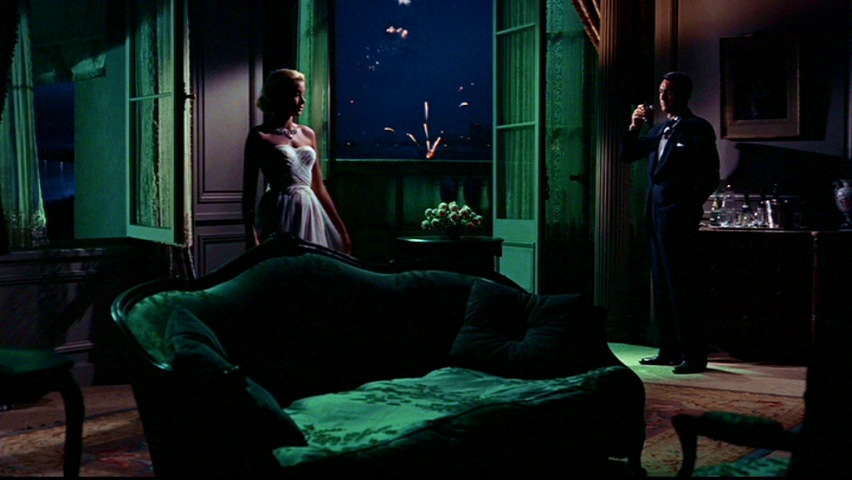


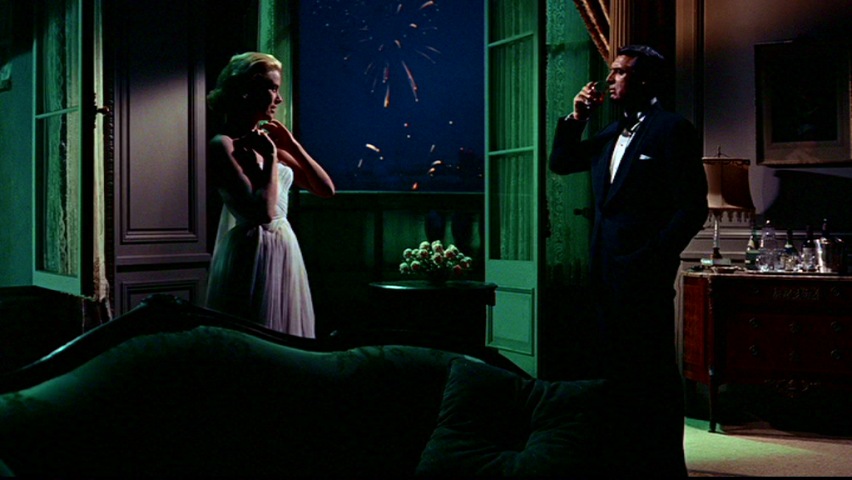
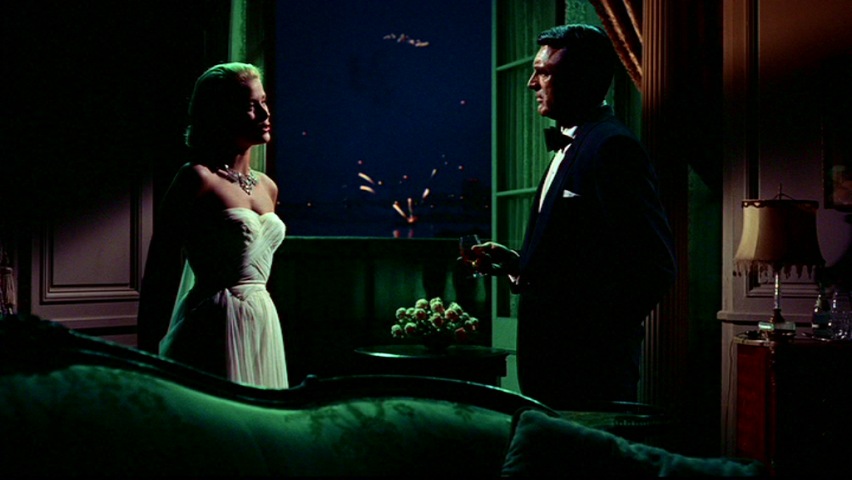
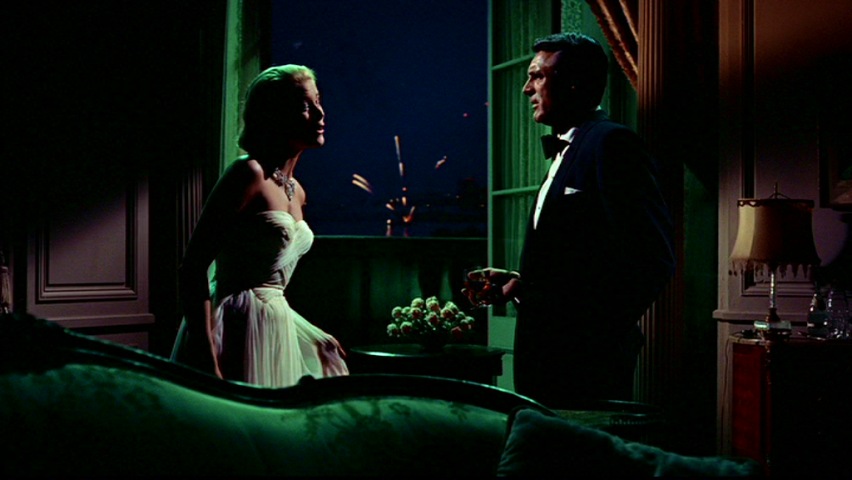


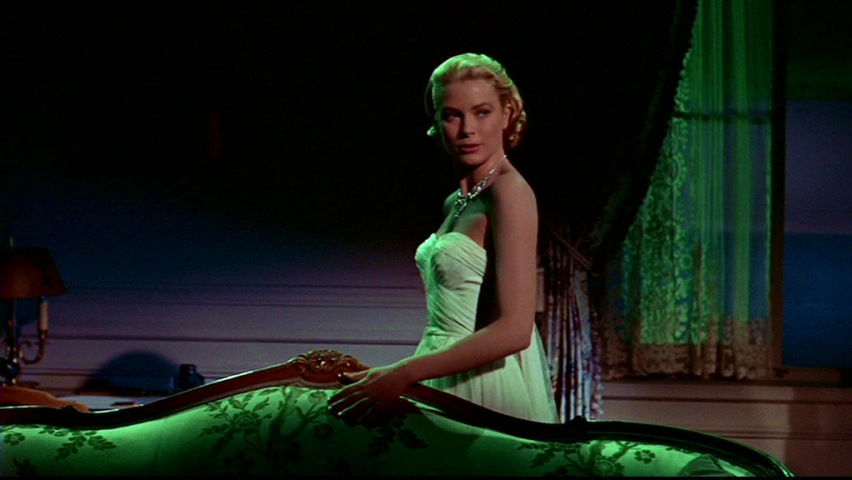




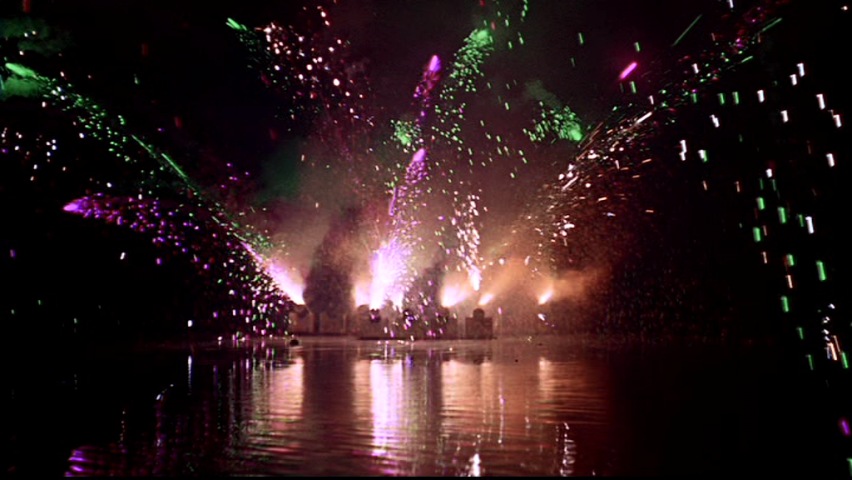



Expatriate
John Robie (Cary Grant) is a retired American citizen, living in France and quietly tending to his vineyards but has retained his American citizenship. After WWII thousands of Americans did indeed become expatriates and lived in foreign countries to do everything from study art to open business ventures. The war was finally over and a dawning optimism would slowly prevail into the fifties.I always found this concept rather exotic and intriguing. In its broadest sense, an expatriate is any person living in a different country from where he or she is a citizen. In modern times this life style has gained a resurgence in popularity since the advent of economic globalization as there are currently an estimated 5.2 million American citizens living outside the U.S..
Of course in today's world, the U.S. Govt. is the only Government in any industrialized country that continues to tax it's citizens on any income earned abroad. So John Robie's lifestyle would be difficult to re-create today. In later years when Alfred Hitchcock was being interviewed by this or that reporter the question that most often arose was "...what was your favorite movie?..." and his reply was always "To Catch A Thief".

The storyline comes from a book written by David Dodge. Born in Berkeley, California his career as a writer began when he made a bet with his wife Elva that he could write a better mystery novel than the one she was reading. He drew on his professional experience as a Certified Public Accountant to create his first adventurous hero, San Francisco tax expert and reluctant detective James "Whit" Whitney. "Death and Taxes" was published in 1941 and David won $5.00 from Elva.
Three more "Whit" Whitney novels were published between 1943 and 1946. After Pearl Harbor Dodge was commissioned in the U.S. Navy and emerged three years later as a Lieutenant Commander. On his release from active duty, he set out for Guatemala by car with his wife and daughter. His Latin-American experiences produced a second adventurous hero, expatriate private investigator and tough-guy soldier of fortune 'Al Colby', and launched Dodge's second career as a travel writer.
"...Dodge's book was inspired by a real incident when he briefly became the number one suspect of a daring cat-burglary at his rich neighbour's villa. It is the story of John Robie, a reformed cat-burglar who must prove his innocence by catching the thief who is duplicating his methods. His pursuit leads him into the arms of beautiful American heiress Francie Stevens..."
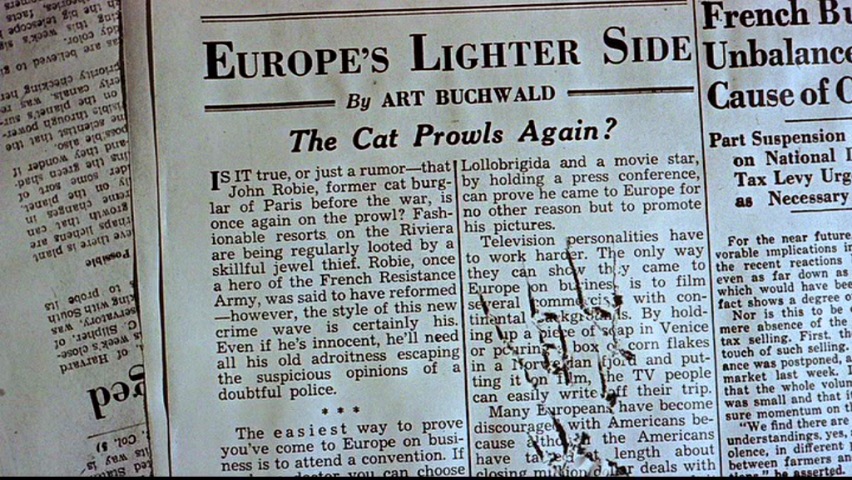

Dodge was fond of explaining that "...while many writers traveled in order to gather material to write about, his goal was to write in order to gather money to travel..." David Dodge also wrote short stories, magazine articles, and plays. He is best known as the author of this movie to which Alfred Hitchcock bought the rights and turned into this fabulous film.
The prophetic scene depicted just below and shot in 1954 shows the beautiful Grace Kelly driving along the very road on which she was to meet her demise almost thirty years later on Sept. 14th, 1982.

The fabulous Grace Kelly as Frances Stevens in a very prophetic scene






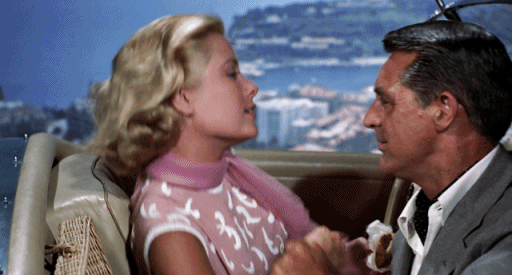



(Click Pic Above to enlarge and take a close look.)
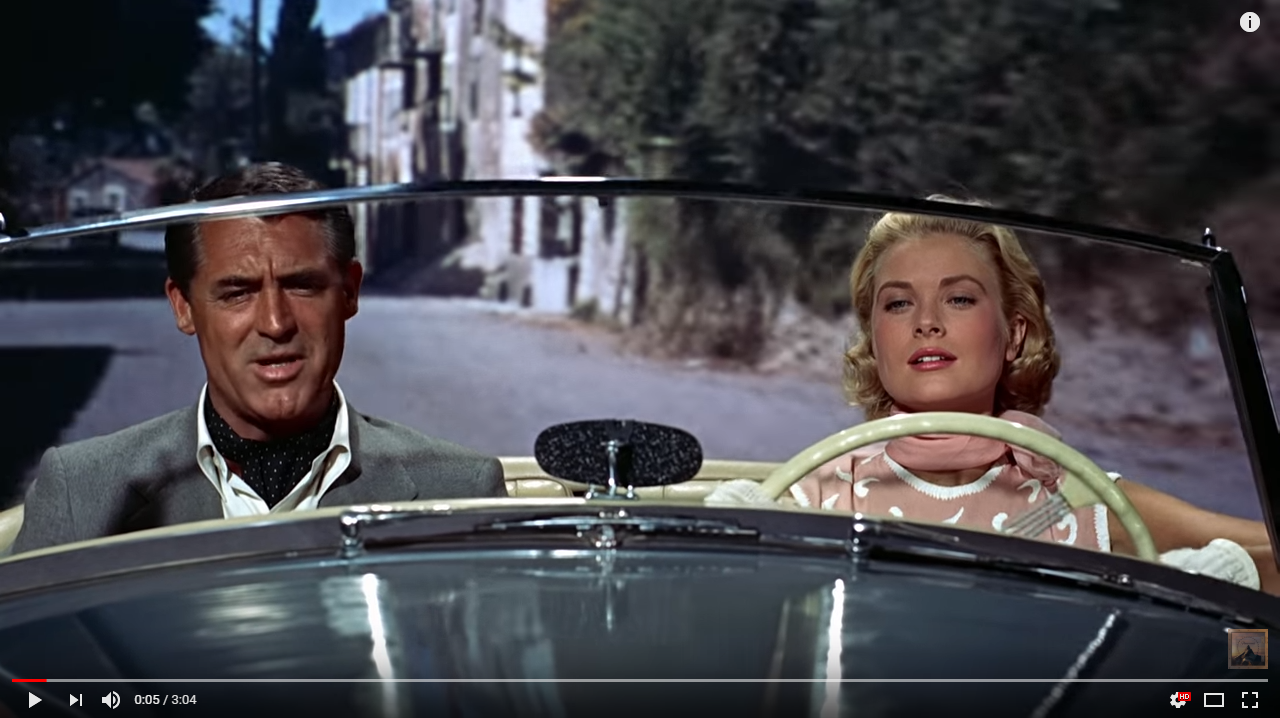
Click Pic Above To Start Video
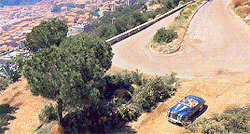
1953 Sunbeam
The car was magnificent and a perfect choice by Hitchcock to add romance and drama. That's a beautiful 1953 Sunbeam Sport Roadster, back when they made them of steel and chrome. With wonderfully simple lines and almost always underpowered by today's standards but like Grace herself, a real classic beauty. I'm sure the car has been auctioned off to some movie fan and I would love to know it's value in todays' dollars.
As most of you know by now Miss Grace herself had a penchant for older men and Cary was a sophisticated and worldly 51yrs old while Grace was a fully developed and exquisitely alluring woman of 26. (The imagination runs amuck). Miss Grace was a perfect icon for the times. Aloof and distant, a symbol of feminine virtue & physical perfection created to be placed on a pedestal and worshiped like a goddess.
In just about all of her roles casting directors contrasted Grace against an attractive earthy tough talking worldly counterpart to highlight her sophisticated attributes. In 'Mogambo' it was Ava Gardner, in 'Rear Window' it was Georgine Darcey and here in 'To Catch A Thief' it was the well established very attractive French ingenue Brigitte Auber playing the 17yr. old vamp 'Danielle Foussard' (Brigitte was actually 27yrs. old during this filming).

The fabulous Grace Kelly as Frances Stevens

Click Pic Above To Start Video
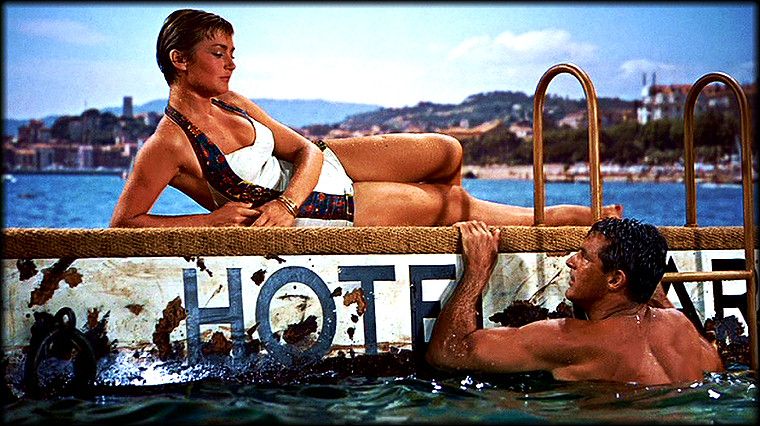
Brigitte Auber as the earthy Danielle Foussard


Beautiful Grace treads water next to the swim platform and has an exchange with Danielle...

The interplay between those two women (Grace and Brigitte) speaks volumes about Americans' point of view of women in the fifties. The Motion Picture Production Code enforcement began to weaken through the fifties but remained in effect until 1968 and all movies had to conform. Interestingly the U.S. Supreme Court had ruled that 'Free Speech' did not apply to the movie industry so the 'way' in which women could be presented was limited by the Government. In 1968, after several years of minimal enforcement, the Production Code was replaced by the MPAA film rating system.





John Robie on the beach checking out Frances Stevens

John Robie on the beach checking out Frances Stevens
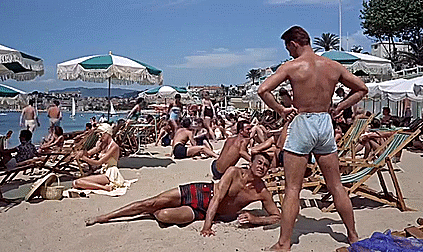
This was the very first film Hitchcock had filmed in the new Vistavision format from Paramount Studios. I'm certainly no expert on such things but it's my understanding all these 'widescreen' formats came about because of the competition of television. It seems at this time each individual Hollywood studio had it's own version of the 'widescreen format'. While most competing widescreen film systems used magnetic audio and true 'stereophonic' sound, Paramount's early VistaVision carried only 'Perspecta Stereo' encoded in the optical track.
The widescreen format apparently produced a larger 'negative' to project onto the screen (eight sprocket holes per frame as opposed to the current standard 35mm film of five sprocket holes per frame). This made colors much more vibrant, richer and intense. Hitchcock made full use of this aspect filming scenes in the 'Flower Market' producing intensely rich colors like this....

(Click Pic Above To See The Entire Scene)
The new widescreen VistaVision rich intense colors had great impact on audiences...

Hitchcock scanning location shots

So many great scenes like this one in the restaurant

So many great scenes like this one in the restaurant

So many great scenes like this one in the restaurant
Whereas Television included a lot of 'family-fare' designed to include kids, Hollywood was trying to produce vehicles that would draw audiences from an older demographic and through innuendo deal with themes not appropriate for children of the time. Murder, burglary and premarital sex, no matter how lighthearted, were not appropriate fare for all audiences.

Alfred's Cameo
Alfred Hitchcock had a signature move he put in just about all of his movies. He would appear as an innocuous background character getting on an elevator or perhaps walking down the street and in this case he appeared as a passenger on the bus in which Cary Grant's character John Robie, had boarded to escape from the pursuing police. Alfred would appear for only a few seconds and if you weren't watching closely you would miss it. The audience loved it and a knowing laughter would ripple throughout the theater whenever that scene appeared. If Youtube hasn't moved it, here is the clip in the box on the right.
Location shots in this film were beautiful, intensly colorful and wonderfully exotic, being filmed in VistaVision, they almost overwhelmed the story. I'm sure the tourism value of this movie increased dramatically. If one couldn't live in John Robie's beautiful bachelor villa, at least one could visit the south of France. It's so gorgeous and appealing. The imagination runs amuck, what red blooded American male would NOT want to be a wealthy ex-cat burglar living in the South of France and being pursued by the likes of Grace Kelly & Brigitte Auber. The best description of the location shots for this movie may be found in a wonderful blog entitled 'Le Stuff' CLICK HERE.

John Robie's gorgeous Villa Noel Fleuri

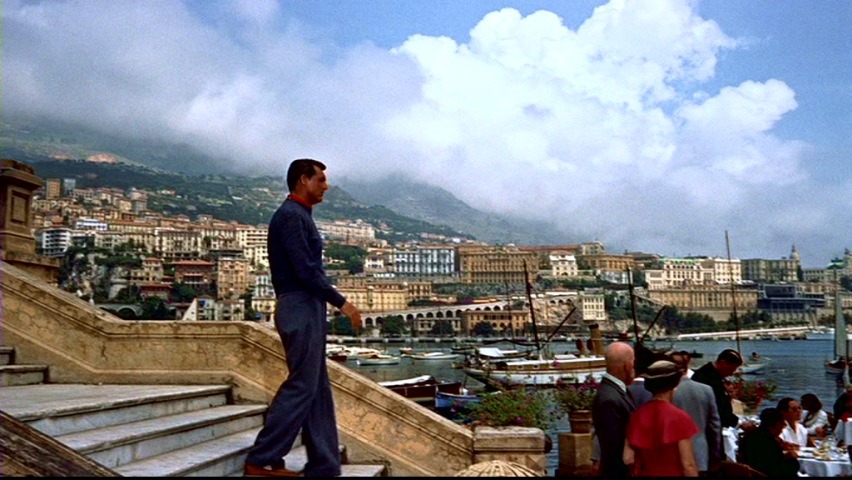
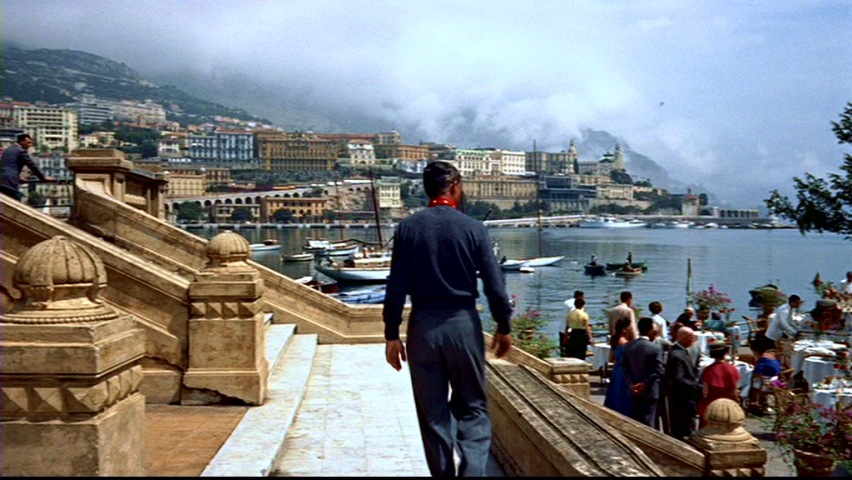
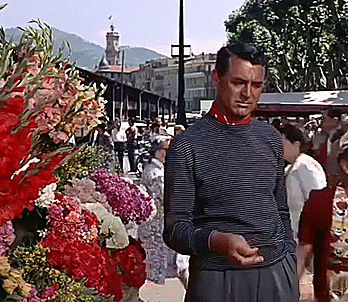
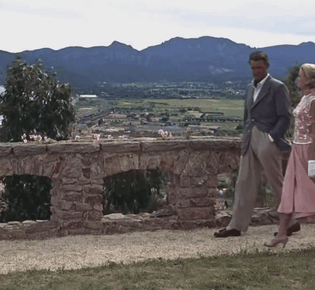
One positive thing the Motion Picture Production Code did (my opinion), was to force writers and directors to creatively find some other way to express the tension of deep personal feelings on screen rather than jumping into bed and performing simulated explicit sex. If I had to pick one scene that sparkled above all others it would be the one depicted just below. Obviously attracted to each other, they stood in the dark on each side of open french doors as fireworks exploded between them in the background. Brilliant!
Cary Grant was already retired from acting at 51yrs. old and I'm not quite sure what Alfred Hitchcock promised in order to lure him out of retirement but perhaps it was an all expense paid trip to the Cote d'Azur or an enormous paycheck but I suspect it was most probably to be the love interest of the stunning Miss Grace Kelly. Who could resist?
If I had to pick one 'love' scene that sparkled above all others it would be this one.....

(Click Pic Above or below to see the entire scene)
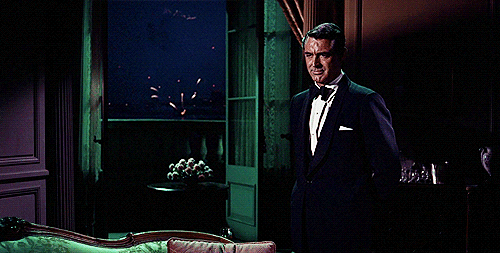
Cary and Grace standing in the moonlight having a very special moment...
This movie was banned, as were all Grace Kelly movies, in Monaco by Prince Rainier. Miss Grace was still under contract and we were only to see her in two more films after this, both released in 1956. "High Society" opposite Bing Crosby and Frank Sinatra and "The Swan" opposite Sir Alec Guinness and Louis Jordan.
Cary and Grace cherished their time together for the rest of their lives. Years later, when asked to name his all-time favorite actress, Cary replied without hesitation: "Well, with all due respect to dear Ingrid Bergman, I much preferred Grace. She had serenity."

Mmmm..... Cary and Grace playing tonsil hockey

♥ Looks like a genuine laugh and watch Grace's reaction ♥

"I much preferred Grace, she had serenity"...Cary Grant

Look up 'Beauty', and this is what you'll find
Meanwhile, back to the story, a masquerade ball is planned for the coming weekend and John Robie knows all the high society jewels on the Cote d'Azur will be in attendance and to catch the real cat burglar John Robie (Cary Grant) stakes out the estate at night and finds himself struggling with an attacker who loses his footing and tumbles over a cliff. It is Foussard (Jean Martinelli), and he does not survive the fall.
The police are satisfied the real cat burglar was the now dead Foussard (Jean Martinelli) and drop their security for the coming masquerade ball planned for the weekend. Robie doesn't believe it was Foussard and decides to stake out the roof top during the masquerade ball. To see the fantastic costumes and all the gorgeous jewels at the masquerade ball (Click Here).

Foussard does not survive the fall..

Click Pic above to see the jewels at the ball

Just as Robie pursues the real cat burglar the police throw a spotlight on him.....

Just as Robie pursues the real cat burglar the police throw a spotlight on him.....
Just in case there is the remotest possibility you have not seen this film I will not give away Hitchcock's surprise ending but for me, this movie is like 'comfort food', reminding me of how adventurous life was going to be when I was such a very young man and saw it for the first time.
Well I hope you enjoyed our little blog about this wonderful movie and if you haven't already, make sure you get a copy of it and add to your collection. If any of the above clips did not load properly just reload the page and all should be well. If you find any broken links just leave me a note and I'll fix them.
Grace Kelly
In 1955 Grace Kelly's rise from an unknown Philadelphia girl to Princess of Monaco was headline news all across America and every teenage girl could feel the influence of Hollywood as a way to succeed and have a fairy tale life. She originally met the Prince on May 6th, 1955 and a year long courtship ensued. Her wedding to the Prince was the 'greatest show on earth' and was estimated to have been watched by over 30 million viewers on live television (Click Here).
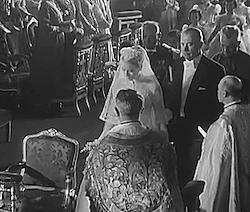




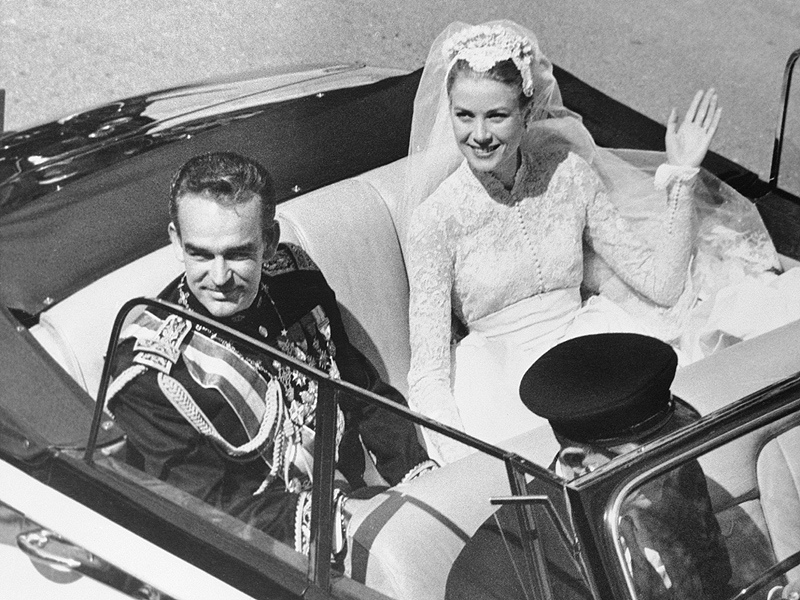


On September 14, 1982, Princess Grace was killed in an automobile accident in Monaco, supposedly on the same road as her famous chase scene in this movie, not far from where she had a picnic scene with Cary Grant. She was 52 years old and lost control of her car after apparently suffering a stroke while at the wheel.
In 1979, Prince Rainier made his acting debut alongside his wife Grace in a 33-minute independent film called Rearranged, produced in Monaco. According to co-star Edward Meeks, after premiering it in Monaco, Grace showed it to ABC TV executives in New York in 1982, who expressed interest if extra scenes were shot to make it an hour long. However, Grace died in a car crash caused by a stroke in 1982, making it impossible to expand the film for American release (CLICK HERE). On 6 April 2005 the Prince died at 81.
Have a wonderful day !
Movie Classics
No comments:
Post a Comment